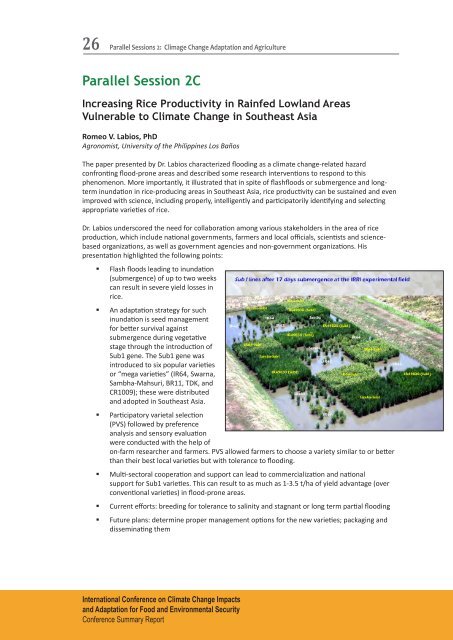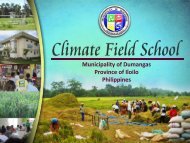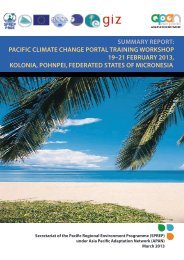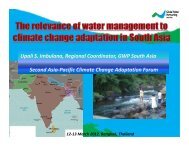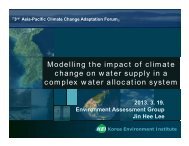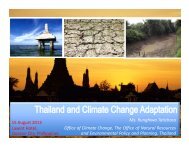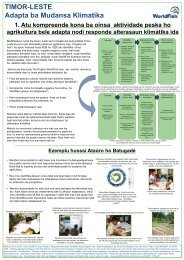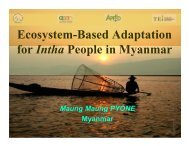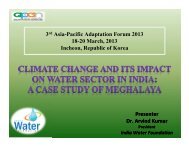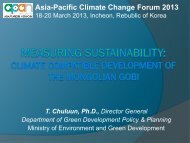PDF file (2.44 MB) - Asia Pacific Adaptation Network
PDF file (2.44 MB) - Asia Pacific Adaptation Network
PDF file (2.44 MB) - Asia Pacific Adaptation Network
You also want an ePaper? Increase the reach of your titles
YUMPU automatically turns print PDFs into web optimized ePapers that Google loves.
26Parallel Sessions 2: Climage Change <strong>Adaptation</strong> and AgricultureParallel Session 2CIncreasing Rice Productivity in Rainfed Lowland AreasVulnerable to Climate Change in Southeast <strong>Asia</strong>Romeo V. Labios, PhDAgronomist, University of the Philippines Los BañosThe paper presented by Dr. Labios characterized flooding as a climate change-related hazardconfronting flood-prone areas and described some research interventions to respond to thisphenomenon. More importantly, it illustrated that in spite of flashfloods or submergence and longterminundation in rice-producing areas in Southeast <strong>Asia</strong>, rice productivity can be sustained and evenimproved with science, including properly, intelligently and participatorily identifying and selectingappropriate varieties of rice.Dr. Labios underscored the need for collaboration among various stakeholders in the area of riceproduction, which include national governments, farmers and local officials, scientists and sciencebasedorganizations, as well as government agencies and non-government organizations. Hispresentation highlighted the following points:• Flash floods leading to inundation(submergence) of up to two weekscan result in severe yield losses inrice.• An adaptation strategy for suchinundation is seed managementfor better survival againstsubmergence during vegetativestage through the introduction ofSub1 gene. The Sub1 gene wasintroduced to six popular varietiesor “mega varieties” (IR64, Swarna,Sambha-Mahsuri, BR11, TDK, andCR1009); these were distributedand adopted in Southeast <strong>Asia</strong>.• Participatory varietal selection(PVS) followed by preferenceanalysis and sensory evaluationwere conducted with the help ofon-farm researcher and farmers. PVS allowed farmers to choose a variety similar to or betterthan their best local varieties but with tolerance to flooding.• Multi-sectoral cooperation and support can lead to commercialization and nationalsupport for Sub1 varieties. This can result to as much as 1-3.5 t/ha of yield advantage (overconventional varieties) in flood-prone areas.• Current efforts: breeding for tolerance to salinity and stagnant or long term partial flooding• Future plans: determine proper management options for the new varieties; packaging anddisseminating themInternational Conference on Climate Change Impactsand <strong>Adaptation</strong> for Food and Environmental SecurityConference Summary Report


